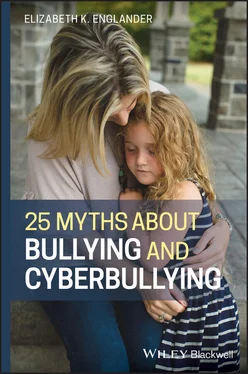No warranty may be created or extended by sales representatives, written sales materials or promotional statements for this work. The fact that an organization, website, or product is referred to in this work as a citation and/or potential source of further information does not mean that the publisher and authors endorse the information or services the organization, website, or product may provide or recommendations it may make. This work is sold with the understanding that the publisher is not engaged in rendering professional services. The advice and strategies contained herein may not be suitable for your situation. You should consult with a specialist where appropriate. Further, readers should be aware that websites listed in this work may have changed or disappeared between when this work was written and when it is read. Neither the publisher nor authors shall be liable for any loss of profit or any other commercial damages, including but not limited to special, incidental, consequential, or other damages.
Library of Congress Cataloging‐in‐Publication Data Names: Englander, Elizabeth Kandel, author. Title: 25 myths about bullying and cyberbullying / Elizabeth K. Englander. Other titles: Twenty‐five myths about bullying and cyberbullying Description: Hoboken, NJ: Wiley Blackwell, 2020. | Includes bibliographical references and index. Identifiers: LCCN 2019052193 (print) | LCCN 2019052194 (ebook) | ISBN 9781118736500 (paperback) | ISBN 9781118736708 (adobe pdf) | ISBN 9781118736562 (epub) Subjects: LCSH: Bullying. | Cyberbullying. Classification: LCC BF637.B85 E54 2020 (print) | LCC BF637.B85 (ebook) | DDC 302.34/3–dc23 LC record available at https://lccn.loc.gov/2019052193LC ebook record available at https://lccn.loc.gov/2019052194
Cover Design: Wiley
Cover Image: © Erin Lester/Getty Images
Dr. Elizabeth K. Englanderis the founder and executive director of the Massachusetts Aggression Reduction Center ( MARC ) at Bridgewater State University, delivering programs, resources, and research to more than 400 schools every year nationwide. As a researcher and a professor of psychology for 25 years, she is a nationally recognized expert in the areas of bullying and cyberbullying, childhood causes of aggression and abuse, and children's use of social media and technology. She was named Most Valuable Educator of 2013 by the Boston Red Sox because of her work in technological aggression and how it interacts with peer abusiveness in general. In 2018, she was appointed to the Massachusetts Governor's Juvenile Justice Advisory Council. Dr. Englander is also the chair of the Cyberbullying Workgroup for the Institute of Child Development and Digital Media. Each year, Dr. Englander trains and supervises graduate and undergraduate students and collaborates with multiple agencies around the state of Massachusetts and across the nation.
Have you ever heard of the Momo Challenge?
If you're lucky enough to have missed it, the Momo Challenge was a widely hyped Internet panic. The idea was that an intensely scary character could, unprovoked, pop up on the screen while any child was using any website and urge that user to hurt themselves. The chatter was frightening, but once you stepped back, the assumptions were a little bizarre: sure, maybe the scary character could pop up on any website; but could it really be true that even a healthy, well‐adjusted child could take the “challenge” and end up committing suicide?
Despite some media reports that purported to demonstrate the allegedly incredible power of this challenge through real‐life examples, it was never verified. A few cases that initially depicted Momo Challenge suicides seemed to have other, more plausible explanations; and in any case, they were far from widespread. Many reports came from social media instead of mainstream news media. The Momo Challenge may have been a hoax, or it may have been true but far less scary or widespread than it was depicted as being. But the damage that Internet scares can do was already done. The Momo Challenge – true or false – became yet another incident in modern life seemingly designed to scare parents out of their wits.
For all our modern conveniences, it's not an easy time to be a parent. We have age‐old problems on a new scale, like bullying. We also have entirely new problems for which we have no history to use as a guide, like cyberbullying (and Internet scares). Parents today aren't indifferent or uncaring; yet when it comes to our efforts to reduce bullying and cyberbullying, it sometimes feels like a case of two steps forward, one step back. We've made some progress in reducing bullying and cyberbullying, but in doing so we've also created other problems. At times, you may feel like you're so focused on protecting your children that they're not able to have a “normal” childhood. Technological innovations have also introduced new complications into the mix – most notably, digital communications and the use of social media. Children today grow up very differently from past generations.
But while these are challenging times, human beings have a pretty good track record when it comes to addressing stubborn problems. Consider: in the last few decades, we've successfully reduced teenage pregnancy, violent crime, illiteracy, school drop‐outs, and many other trials in the developed world. Like these, aggression and bullying are stubborn problems; but don't mistake this statement for fatalism. We can improve these troubles as well. The fact is, we've already made some solid progress. Many of us now recognize how serious a problem bullying and cyberbullying can be.
So, why did I write this book? Some of the ways we've addressed bullying and cyberbullying can actually hamper us if we're not careful. While our focus on bullying and cyberbullying has undoubtedly helped children become healthier and less aggressive, that focus has also resulted in a lot of noise, misinformation, myths, and anxiety for parents and children. This book addresses that noise and misinformation. These myths are not only ineffective; they can actively impede our efforts to reduce bullying and cyberbullying. This book is designed to help parents reject myths and become more effective in helping to guide our kids through modern childhood and adolescence.
As with my other books, it took a village to produce this one. I have a great deal of help and support, from my editors at Wiley to my staff at the Massachusetts Aggression Reduction Center and at Bridgewater State University. Special thanks to Jayne Fargnoli and Melissa Duphily for your support. But the real wind beneath my wings comes from my children – Josh, Nick, and Max – and my steadfastly wonderful husband, Michael, who believes in me and never has a moment's doubt. Love to all of you.
Elizabeth K. Englander
Boston, Massachusetts
2020
Chapter 1 Why Talk About Myths Instead of Facts?
Maybe you're looking for a really satisfying story about bullying: perhaps a story about someone who was viciously bullied, but who stood up fearlessly and made the bully wither in public shame through the use of their razor‐sharp wit; or who, surrounded by supportive and admiring friends, felt nothing but supremely self‐confident indifference. Those are the stories we all want to hear and the stories we've all dreamed about, although as a teenager I personally only came up with cutting retorts hours or days too late. I think it's common to dream about heroic solutions to bullying; some things never change. On the other hand, certain things about bullying have definitely changed – a lot . Twenty years ago, we might have laughed if someone had suggested that by 2010, bullying by girls would be just as much of a public health concern as boys' aggression. Bullying in suburban schools as a major problem? Bullying in private schools? In religious and parochial schools? Cyber bullying?
Читать дальше












